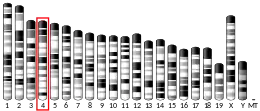| ZNF436 | |||||||||||||||||||||||||||||||||||||||||||||||||||
|---|---|---|---|---|---|---|---|---|---|---|---|---|---|---|---|---|---|---|---|---|---|---|---|---|---|---|---|---|---|---|---|---|---|---|---|---|---|---|---|---|---|---|---|---|---|---|---|---|---|---|---|
| Identifiers | |||||||||||||||||||||||||||||||||||||||||||||||||||
| Aliases | ZNF436, ZNF, Zfp46, zinc finger protein 436 | ||||||||||||||||||||||||||||||||||||||||||||||||||
| External IDs | OMIM: 611703 MGI: 99192 HomoloGene: 40684 GeneCards: ZNF436 | ||||||||||||||||||||||||||||||||||||||||||||||||||
| |||||||||||||||||||||||||||||||||||||||||||||||||||
| |||||||||||||||||||||||||||||||||||||||||||||||||||
| |||||||||||||||||||||||||||||||||||||||||||||||||||
| |||||||||||||||||||||||||||||||||||||||||||||||||||
| |||||||||||||||||||||||||||||||||||||||||||||||||||
| Wikidata | |||||||||||||||||||||||||||||||||||||||||||||||||||
| |||||||||||||||||||||||||||||||||||||||||||||||||||
Zinc finger protein 436 is a protein that in humans is encoded by the ZNF436 gene.[5][6]
See also
References
- 1 2 3 ENSG00000283009 GRCh38: Ensembl release 89: ENSG00000125945, ENSG00000283009 - Ensembl, May 2017
- 1 2 3 GRCm38: Ensembl release 89: ENSMUSG00000051351 - Ensembl, May 2017
- ↑ "Human PubMed Reference:". National Center for Biotechnology Information, U.S. National Library of Medicine.
- ↑ "Mouse PubMed Reference:". National Center for Biotechnology Information, U.S. National Library of Medicine.
- ↑ Nagase T, Kikuno R, Hattori A, Kondo Y, Okumura K, Ohara O (Feb 2001). "Prediction of the coding sequences of unidentified human genes. XIX. The complete sequences of 100 new cDNA clones from brain which code for large proteins in vitro". DNA Res. 7 (6): 347–55. doi:10.1093/dnares/7.6.347. PMID 11214970.
- ↑ "Entrez Gene: ZNF436 zinc finger protein 436".
Further reading
- Li Y, Du X, Li F, et al. (2007). "A novel zinc-finger protein ZNF436 suppresses transcriptional activities of AP-1 and SRE". Mol. Biol. Rep. 33 (4): 287–94. doi:10.1007/s11033-006-9019-5. PMID 17089209. S2CID 13591444.
- Gregory SG, Barlow KF, McLay KE, et al. (2006). "The DNA sequence and biological annotation of human chromosome 1". Nature. 441 (7091): 315–21. Bibcode:2006Natur.441..315G. doi:10.1038/nature04727. PMID 16710414.
- Gerhard DS, Wagner L, Feingold EA, et al. (2004). "The status, quality, and expansion of the NIH full-length cDNA project: the Mammalian Gene Collection (MGC)". Genome Res. 14 (10B): 2121–7. doi:10.1101/gr.2596504. PMC 528928. PMID 15489334.
- Ota T, Suzuki Y, Nishikawa T, et al. (2004). "Complete sequencing and characterization of 21,243 full-length human cDNAs". Nat. Genet. 36 (1): 40–5. doi:10.1038/ng1285. PMID 14702039.
- Strausberg RL, Feingold EA, Grouse LH, et al. (2003). "Generation and initial analysis of more than 15,000 full-length human and mouse cDNA sequences". Proc. Natl. Acad. Sci. U.S.A. 99 (26): 16899–903. Bibcode:2002PNAS...9916899M. doi:10.1073/pnas.242603899. PMC 139241. PMID 12477932.
- Bray P, Lichter P, Thiesen HJ, et al. (1991). "Characterization and mapping of human genes encoding zinc finger proteins". Proc. Natl. Acad. Sci. U.S.A. 88 (21): 9563–7. Bibcode:1991PNAS...88.9563B. doi:10.1073/pnas.88.21.9563. PMC 52758. PMID 1946370.
- Lichter P, Bray P, Ried T, et al. (1992). "Clustering of C2-H2 zinc finger motif sequences within telomeric and fragile site regions of human chromosomes". Genomics. 13 (4): 999–1007. doi:10.1016/0888-7543(92)90013-I. PMID 1505991.
This article is issued from Wikipedia. The text is licensed under Creative Commons - Attribution - Sharealike. Additional terms may apply for the media files.



